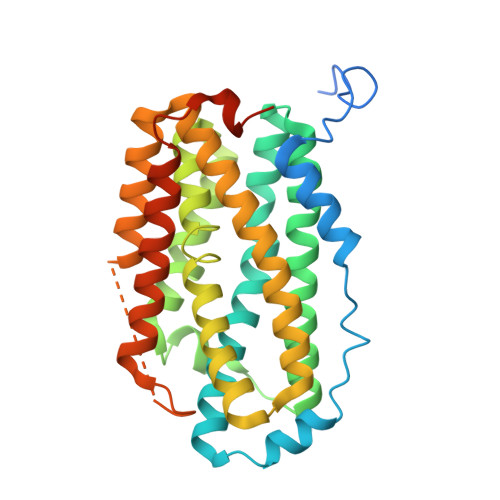Solving a new R2lox protein structure by microcrystal electron diffraction.
Xu, H., Lebrette, H., Clabbers, M.T.B., Zhao, J., Griese, J.J., Zou, X., Hogbom, M.(2019) Sci Adv 5: eaax4621-eaax4621
- PubMed: 31457106
- DOI: https://doi.org/10.1126/sciadv.aax4621
- Primary Citation of Related Structures:
6QRZ - PubMed Abstract:
Microcrystal electron diffraction (MicroED) has recently shown potential for structural biology. It enables the study of biomolecules from micrometer-sized 3D crystals that are too small to be studied by conventional x-ray crystallography. However, to date, MicroED has only been applied to redetermine protein structures that had already been solved previously by x-ray diffraction. Here, we present the first new protein structure-an R2lox enzyme-solved using MicroED. The structure was phased by molecular replacement using a search model of 35% sequence identity. The resulting electrostatic scattering potential map at 3.0-Å resolution was of sufficient quality to allow accurate model building and refinement. The dinuclear metal cofactor could be located in the map and was modeled as a heterodinuclear Mn/Fe center based on previous studies. Our results demonstrate that MicroED has the potential to become a widely applicable tool for revealing novel insights into protein structure and function.
Organizational Affiliation:
Department of Materials and Environmental Chemistry, Stockholm University, 10691 Stockholm, Sweden.
















